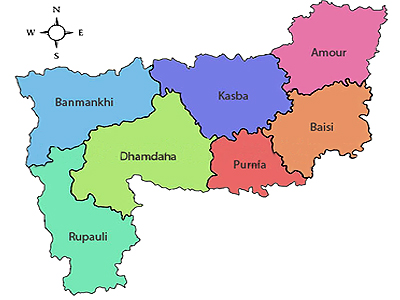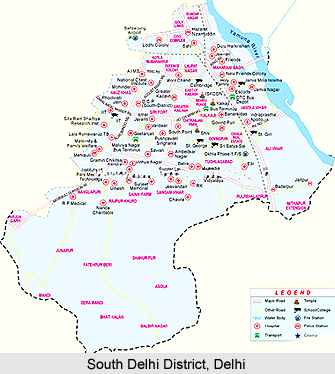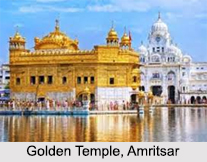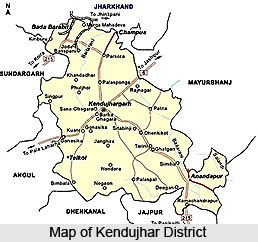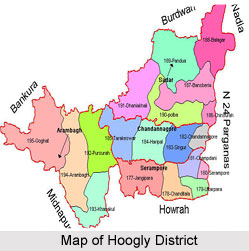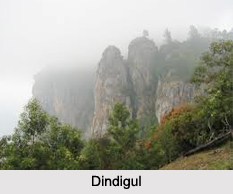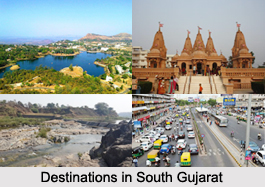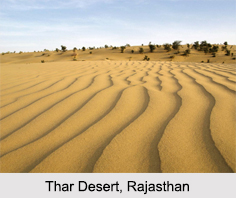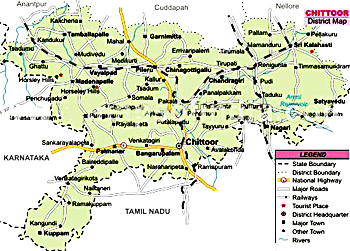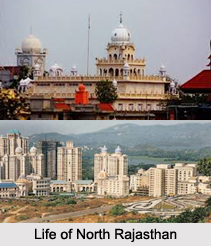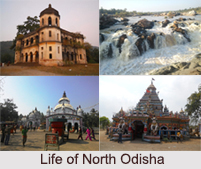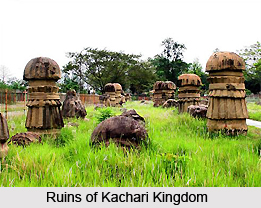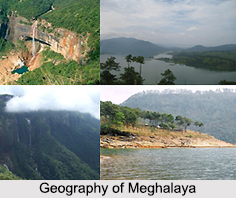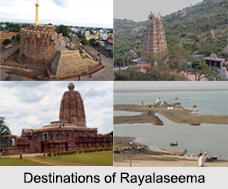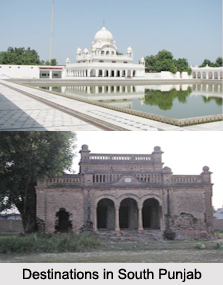Introduction
Bagalkot District is an administrative districts the state of Karnataka in India. The district headquarters is located in the town by the same name. The district is located in northern Karnataka on the Northern Karnataka Plateau, which is a part of the larger Deccan Plateau. The exact geographical location of the district is 16 degree and 12 minutes North and 75 degree and 45 minutes east.
History of Bagalkot District
History of Bagalkot District comprises mainly of the early, medieval and modern history of India. The History of Bagalkot District deals with the times of Mahabharata, Pulakeshin I and other South Indian kings in the early times. Stone inscriptions recognize Bagadige as the early name of Bagalkot. As a certain myth goes, Ravana, lord of Lanka to his musicians as a gift, gave the area. Other taluks in Bagalkot District also have legends related to them. Badami, previously known as Vatapi, was named after a demon king who, as the Mahabharata goes, ruled the area along with his brother Ilvala. Many excavations have been made in Bagalkot District, which provide important information.
The district is known as the seat of Chalukya empire during the golden rule of this dynasty. There many archaeological remaining that were constructed during the rule of Chalukyas and Rashtrakutas. The rulers of Chalukya Dynasty once upon a time ruled Bagalkot District, in northern Karnataka. The Bagelkot District covers at a distance of 6593 sq. km. Bagalkot District is flanked by Bijapur district in the north and Gadag district in the southern part. While the Chalukyas also covered the Raichur district. It lies towards east of Bagalkot District and Koppal district towards southeast along with Belgaum district towards west border the same.
Early History of Bagalkot District
In Bagelkot District the Archaeological department have been discovered the middle Palaeolithic localities in the Kalagdi basin of the district. The discovery of settlements in the village of Lakhamapura near the Malaprabha River valley yielded the identification of quartzitic artefacts such as handaxes and cleavers. It proved that there was a prehistoric settlement in this area.
A pre-Chalukyan brick temple was discovered at the foothills of Bachinagudda, in Pattadakal, where an idol depicting the bust of Chaturmukha Lord Shiva was discovered. Evidence of megalithic habitation was also discovered at the foothills of Bachinagudda, as were Marahathi and Satavahana coins of a later period. The first documented evidence of the existence of Bagalkot district dates back to the 2nd century CE, when the taluks of Badami, Indi and Kalkeri were mentioned in the works of the Greek astronomer Ptolemy.
In the 6th century BC, the Hindu Chalukya rulers ruled over much of present South India. The Chalukyan king Pulakeshin I established Bagalkot as his administrative headquarters; the district retained its prominent status until the Chalukyan empire was sacked by the Rashtrakutas in 753 CE. The history of Bagelkot district can be found in the writings of Hiuen Tsag.
The period of rule of the Chalukyas of Badami, whose kingdom stretched from modern Karnataka to Maharashtra and Gujarat, was a highlight of the history of Bagalkot District. Chalukya king Pulakeshin II further consolidated the empire by battling with the Kadamba Dynasty, Gangas Dynasty, Maurya Dynasty of the Konkan, Gurjaras and Emperor Harshavardhana, whom he vanquished on the banks of the Narmada river. Accounts of war were inscribed on stone structures in the town of Aihole, now located in the taluk of Hungund. The Kalyani Chalukyas, descendants of the Badami Chalukyas, conquered the area before the dawn of the 10th century CE. Their rule was interspersed with wars against the rulers of Cholas Dynasty and Hoysala Dynasty.
The Kalyani Chalukyas moved their capital from Badami to Kalyani, in the present day district of Bidar. Akkadevi, sister of the Kalyani Chalukya Jayasimha II ruled in the area for more than 40 years from 1024 CE. During the course of her rule of the area, then known as Kisukadu, seventy villages from Bagalkot district were added to her administration.
The Chola king Virarajendra seized the area by defeating Somesvara I at Koodalasangama. By the 11th century BCE, all of Karnataka including Bagalkot fell into the dominion of the Hoysala Empire, first consolidated by Veera Ballala and later subordinated to the Sinda kings.
Medieval History of Bagalkot District
The Yadavas of Deogiri annexed Bagalkot in 1190 AD and ruled until approximately the thirteenth century. The Deccan invasion by the Muslim Khilji dynasty, led by Ala ud din Khilji in 1294 brought an end to the rule of the Yadavas. In the 14th century, much of this territory was overrun by Muhammad Tughlaq. That the Tughlaqs were undisputed overlords of this territory cannot be established since Harihara, first king of the Vijayanagara Empire, is supposed to have possessed territories as far north as Kaladgi in 1340 and because a fort was built under permission from Harihara in Badami during that period. In the late 15th century, the Adil Shahi dynasty founded by Yusuf Adil Shah set up an autonomous state with Bijapur as its capital. It is from this time that Bagalkot`s history merged with that of Bijapur.
Modern History of Bagalkot District
It is from this time that Bagalkot`s history is homogeneous to that of Bijapur`s. In 1818, after having lost their kingdom to the British East India Company, the Maratha Peshwas of Satara were crowned under lords of the kingdom. They had no significant power in their hands. In 1848, the Peshwas even lost this power and the district completely passed into the hands of the British Raj. It then became a part of the dominion of the Bombay Presidency. Taking a section of the existing Bijapur district in 1997 made a separate district of Bagalkot; 50 years after India got her independence.
India gained independence from the British in 1947; thereafter, the States Reorganisation Act of 1956 allowed for the creation of a Mysore State, renamed Karnataka in 1971, and for Bijapur (and therefore Bagalkot) to be included in its dominion. A separate district of Bagalkot was carved out from the existing Bijapur district in 1997.
Reference of Bagalkot District in History
A Chalukyan sculpture of Shiva has been recovered from the taluk of Badami. Moreover, evidence of megalithic habitat was also found at the foothills of Bachinagudda. The 12th century social reformer Basavanna, who sincerely fought against exploitation of the lower caste people by the upper caste ones, was born in Koodalasangama, a town in the taluk of Hungund in this district. The Government of India authorized a pilgrim centre in the town of Kudalasangama in honour of Basavanna. Purandara Dasa widely regarded as the initiator of Carnatic music and a well-known proponent of the Bhakti Movement stayed in Bagalkot District and composed his music in Kannada. In the 14th century, Muhammad Bin Taghlaq occupied a large fraction of this territory.
Geography of Bagalkot District
The climate of Bagalkot district is hot and arid throughout the year and rainfall is scanty. Bagalkot district receives the lowest annual rainfall in Karnataka. 52% of the total annual rainfall occurs in the months of September and December. The regions are semi- arid with no dense vegetation. The Krishna River, Ghataprabha River and Malaprabha River flow through the area but none are perennial rivers.
The soil found in the area is usually black or red. Black soil preserves moisture and is often used for the cultivation of cotton. Rabi and jowar are mainly cultivated in Bagalkot district, along with groundnut, cotton, maize, bajra, wheat, sugarcane and tobacco. As boundaries, Bagalkot District has Belgaum District to the west, Bijapur District and Gulbarga District to the north and north -east, Raichur District to the east and Koppal District, Gadag District and Dharwad District respectively to the south -east, south and south -west. It covers a total area of 6593 square kms.
Economy of Bagalkot District
The district is also rich in minerals. In the village of Kaladgi, which is situated 24 km from the town of Bagalkot, copper is found. Iron ore is also there in the southern part of the district. The gneiss family of rock is commonly found here. Frequent rock types in the region comprise quartzite, greenstone, sandstone and limestone. Due to the dry climate, the region is often prone to drought and crop failure. The mean rainfall in the area is more or less 318 mm annually. Agriculture is the most important means of survival in the district.
Over 65% of the working people in Bagalkot district are engaged in agriculture. It should be significantly noted that 80% of female workers in the district are engaged in agriculture. Jowar crop constitutes the chief food of the people of this region. Pulses are also cultivated in the region, principally gram, tuvar daal, kulith and moong daal. The district also grows Linseed, castor oil and sesamum. Reservoirs like the Kendur reservoir provide water for irrigation.
Demography of Bagalkot district
The district, with a growth rate of about 19% in every ten years is one of the ten fastest growing districts in Karnataka. 86% of the population in the district consists of Hindus, while 11% of the population is Muslim. Jains fill up a little over 1% of the population, while Christians constitute 0.17%. Scheduled Castes and Tribes make up about 17% of the total population. Kannada, the state language of Karnataka, is the most extensively spoken language in the district. The mean literacy rate of the district is 57.3%, higher than the national average of 52% but lower than the average literacy rate of the state, which is 66.6%.
Bagalkot ranks 22nd out of the 27 districts in Karnataka in terms of adult literacy. The population density of Bagalkot is in the order of 251 persons per square kilometre. Housing conditions in the district are quite good and mass media (radio, transistor, television) penetrates about 67% of the total area of the district. The sex ratio of the district is 980 females per 1000 males, significantly higher than the national mean of 927.
Culture of Bagalkot District
Culture of Bagalkot district has been adequately influenced by Kannada culture and to some extent by Marathi culture as well, partly because of the district`s nearness to Maharashtra and partly because of its previous history of being a taluk under the jurisdiction of the Bombay Presidency. The conventional cuisine of the district is characteristic of the North Karnataka cuisine. Jowar based food items such as Bhakri are commonly eaten. Other varieties of Indian bread made out of jowar are also widespread and are coloquially known as jolada rotti.
As is common to most of the North Karnataka districts, Jhunka, a garbanzo beans based dish is very much prevalent and is usually eaten with Bhakri. These two dishes together are known as Jhunka bhakar. Though not cultivated widely in the district, rice, as in all of South India, is part of the staple diet. It is imported from other parts of the state and region. Soups prepared from lentil and pulses are commonly eaten. Ilkal town in Bagalkot district is well known for the Ilkal sarees manufactured there.
Tourism in in Bagalkot District
Tourism in Bagalkot district in Karnataka includes travelling to historical and religious places. The various places of tourism in the district of Bagalkot are spread over the different regions that comprise it, namely- Badami, Aihole, Pattadakal and Kudalasangama. Aihole is well known for the Ramalinga temple and the Muslim mosque located here. Once the capital of the early Chalukya dynasty (6th to 8th centuries), Aihole is a picturesque village on the banks of the Malaprabha river. Also called Ayyavole and Aryapura in the inscriptions, Aihole is historically famous as the cradle of Hindu temple architecture. Architecture of Aihole temples is most remarkable. There are about 125 temples divided into 22 groups scattered all over the villages and nearby fields. Most of these temples were built between the 6th and 8th centuries and some even earlier. Only mere traces of a fort dating from the 6th century can be seen today.
Pilgrimage Tourism in Bagalkot District
A large number of prehistoric sites have been found in Morera Angadigalu, near the Meguti hillocks in Aihole. Excavations near some temples have yielded traces of antique pottery and bases of structures constructed with bricks of pre-Chalukyan times. More temples are being excavated every day bearing witness to the vigorous experimentation on temple architecture which went on at Aihole more than 14 centuries ago. Among the numerous temples here are the Durga temple, the Ladh Khan temple, the Meguti Jain temple, the Gowda temple etc. Aihole is also well known for its famous traditional handloom, art silk and silk sarees. The best time to visit Aihole is October to March.
Chandrasekhara Temple is of moderate proportions (10.0 x 5.20 metres). The entire construction is pretty plain and simple and is carefully nestled between the Galaganatha on the north and the Sangamesvara on the south in the Indian state of Karnataka.
This temple, which is entirely flat roofed, actually consists of a rectangular closed mandapa without pillars, antarala and a receding garbhagriha. In the front is a flight of steps with balustrades, to the mandapa. Each dvara-bandha of the mandapa and garbha- griha is flanked by Saiva dvarapalas. The exterior of the walls is throughout decorated with pilaster motifs at regular intervals. In front of the temple is Nandi mandapa of which only the adhishthana with Nandi thereon at the centre is extant.
Badami, the one time capital of the Chalukyas, is noted for several temples, some structural and other rock-cut, of the 6th and 7th Centuries. The foundations of Badami, or Vatapi as it was called, were laid by Pulakeshin I (535 - 566 AD) his son Kirtivarman, (567 - 598 AD), beautified the town with temples and other buildings. The Badami cave temples are a group of four cave temples that have been carved out of the hill opposite Badami fort.
Leisure Tourism in Bagalkot District
The Chalukyan king, Mangalesa (598-610 AD) was responsible for the completion of these cave temples. Of the four, three are Brahman cal, while the fourth is Jain. Nearly 2000 steps have to be climbed to reach the cave. Strategically situated on top of the hill, the Badami Fort encloses large granaries and a treasury of impressive temples on top of the northern end of the hill. Also located here on the Bhutanatha Temple Road is a museum and art gallery maintained by the Archaeological Survey of India. The best times to visit the town are between October to March as a number of important functions take place during this time. It is well noted for the Banashankari Temple Festival held near Badami during January- February, the Virupaksha temple Car Festival in Pattadakal in March and the Mallikarjuna Temple Festival in Pattadakal in March-April.
The tiny village of Pattadakal is situated on the banks of the Malaprabha River. Referred to as Petrigal by Ptolemy, Pattadakal was later known variously as Raktapura (Red Town) and Pattadakal Kisuvolal. This place reached its pinnacle of glory under the Chalukyas from the seventh to the ninth centuries functioning as a royal commemorative site. The group of about ten temples, surrounded by numerous minor shrines and plinths, represents the climax of early architecture in Western Chalukya dynasty.
King Vikramaditya II (734 - 745 AD) and his art loving queens Lokmahadevi and Trailkyamahadevi, brought sculptors from Kanchipuram to create fantasies in stone in Pattadakal. Some of the most beautiful temples situated here are the Jambulinga temple, Virupaksha temple, Sanghameswara Temple, Malikarjuna Temple, Kada Siddeshwara Temple etc. Also found here is a Jain temple beautifully constructed in the Dravidian style and probably dating back to the ninth century. Among the important events held here are the Banashankari Temple Festival held near Badami during January-February each year, Virupaksha Temple Car Festival in Pattadakal in March and Mallikarjuna Temple Festival in Pattadakal in March- April. The best time to visit Pattadakal is between October and March.
Kudalasangama is a place of great historical significance which also has immense religious importance. It is a temple town located at the confluence of the Krishna River and Malaprabha River. Kudalasangama is most famous for the 12th century Sri Sangameshwara temple that has been constructed in the Chalukyan style. This monument is dedicated to the poet and teacher, Basaveshwara, born in the town in the 2nd century. Kudalasangama is a famous pilgrimage centre for the Hindus. It can be easily reached by road. The nearest railway station is that of Bijapur. Thus mentioned are the various places of tourism in the Bagalkot district.


